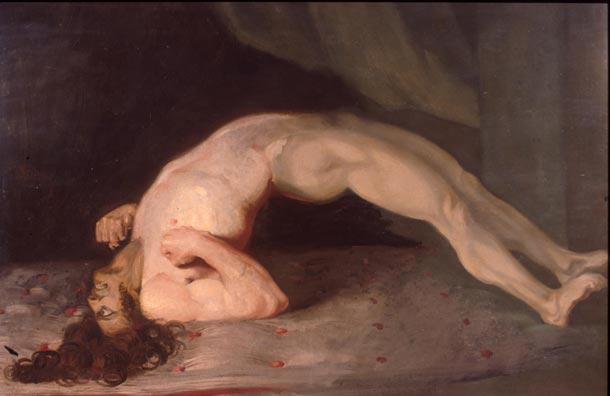Muscle spasm: Difference between revisions
Kiran Singh (talk | contribs) No edit summary |
Kiran Singh (talk | contribs) No edit summary |
||
| Line 5: | Line 5: | ||
ICD9 = {{ICD9|728.85}} | | ICD9 = {{ICD9|728.85}} | | ||
}} | }} | ||
==Overview== | |||
A '''spasm''' is a sudden, involuntary contraction of a [[muscle]], a group of muscles, or a hollow [[Organ (anatomy)|organ]], or a similarly sudden [[contraction]] of an [[orifice]]. It is sometimes accompanied by a sudden burst of [[pain]], but is usually harmless and ceases after a few minutes. Spasmodic muscle contraction may also be due to a large number of medical conditions, however, including the [[dystonia]]s. | A '''spasm''' is a sudden, involuntary contraction of a [[muscle]], a group of muscles, or a hollow [[Organ (anatomy)|organ]], or a similarly sudden [[contraction]] of an [[orifice]]. It is sometimes accompanied by a sudden burst of [[pain]], but is usually harmless and ceases after a few minutes. Spasmodic muscle contraction may also be due to a large number of medical conditions, however, including the [[dystonia]]s. | ||
| Line 37: | Line 39: | ||
{{Nervous and musculoskeletal system symptoms and signs}} | {{Nervous and musculoskeletal system symptoms and signs}} | ||
[[Category: | [[Category:Symptoms]] | ||
[[Category:Signs and symptoms]] | |||
[[es:Espasmo muscular]] | [[es:Espasmo muscular]] | ||
[[fr:Spasme]] | [[fr:Spasme]] | ||
[[pl:Kurcz]] | [[pl:Kurcz]] | ||
[[pt:Espasmo]] | [[pt:Espasmo]] | ||
[[ru:Спазм]] | [[ru:Спазм]] | ||
[[zh:抽搐]] | [[zh:抽搐]] | ||
{{WH}} | {{WH}} | ||
{{WS}} | {{WS}} | ||
Latest revision as of 14:18, 17 June 2015
| File:Wiktionary-logo-en-v2.svg | Look up spasm in Wiktionary, the free dictionary. |
Overview
A spasm is a sudden, involuntary contraction of a muscle, a group of muscles, or a hollow organ, or a similarly sudden contraction of an orifice. It is sometimes accompanied by a sudden burst of pain, but is usually harmless and ceases after a few minutes. Spasmodic muscle contraction may also be due to a large number of medical conditions, however, including the dystonias.
By extension, a spasm is temporary burst of energy, activity, or emotion.

A subtype of spasms is colic, an episodic pain due to spasms of smooth muscle in a particular organ (e.g. the bile duct). A characteristic of colic is the sensation of having to move about, and the pain may induce nausea or vomiting if severe. Series of spasms or permanent spasms are called a spasmism.
In very severe cases, the spasm can induce muscular contractions that are more forceful than the sufferer could generate under normal circumstances. This can lead to torn tendons and ligaments.
Some argue that hysterical strength is a type of spasm induced by the brain under extreme circumstances.
Causes
- Drugs side effect: Hydrochlorothiazide
See also
External links
Template:Nervous and musculoskeletal system symptoms and signs